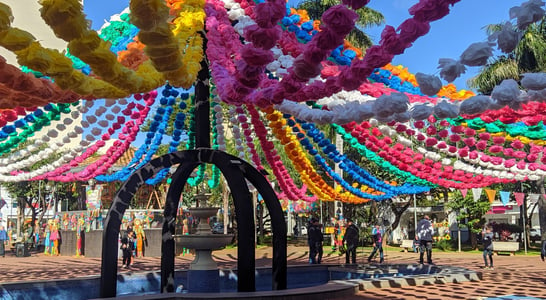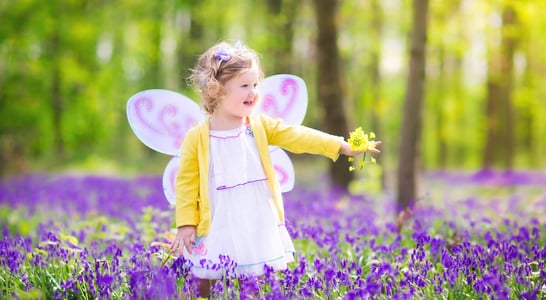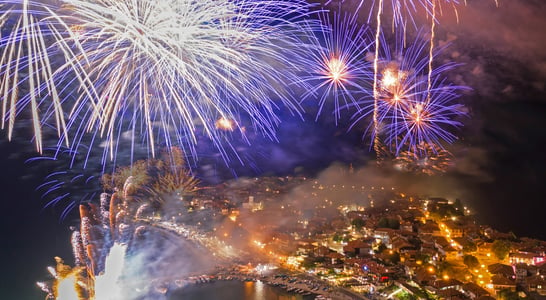
Midsummer Day
It's the time of year when the sun shines brighter and the nights grow shorter. Celebrate the season with bonfires, flowers, and fun!
Midsummer Day marks the celebration of the summer season in the Northern Hemisphere. In many cultures, Midsummer Day was seen as a time of fertility, abundance, and the renewal of life.
Over time, this day also became associated with St. John the Baptist, an important figure in Christian religion, and the solstice day was turned into St. John’s Day.
While it is a day observed by many countries around the world, Midsummer Day has stronger ties to the Scandinavian nations (Norway, Sweden, Finland and Denmark), where it is still viewed and celebrated in a big way.
How to Celebrate Midsummer
While the majority of the countries around the world mark the arrival of summer with their own version of St. John’s Day, some countries—particularly the Nordics—take Midsummer Day as a public holiday, and celebrate it with special events and lots of outdoor activities.
In Sweden, Midsummer is one of the most important holidays of the year, and it is filled with traditional dances, bonfires, and feasts. In Finland, Midsummer is celebrated with sauna rituals, bonfires, and the gathering of wildflowers.
Also, since the 1500s, many of these festivities include the traditional maypole, a tall wooden pole adorned with garlands made of flowers, around which the people would dance and sing.
Whether it is celebrated as a religious or pagan festivity, Midsummer Day is still a day for spiritual reflection and a celebration of the cycles of life and new beginnings.
History of Midsummer
While it’s not clear when it started, it is known that Midsummer was rooted in pagan and pre-Christian traditions in Europe, where it was practiced as a ritual centered around the sun to honor nature and the magical and healing properties of plants.
There were also other ceremonies held on this day to ensure good fortune and a good harvest, since this celebration took place between planting and harvesting seasons.
Festivities included dancing, singing, drinking, cleaning the house, and collecting flowers. Bonfires, now a central component of this tradition, were meant to be danced around and helped keep the “evil spirits” away, which were believed to roam the earth more freely at this time of the year.
This date was also associated with the local gods of each country. In Northern Europe, the summer solstice was also known as Litha, a festival dedicated to the Norse god Balder, the god of love and light, commonly associated with this time of growth and rebirth.
In Finland, for example, Midsummer was called Ukon juhla after Ukko, the god of thunder who controlled the rain and thus the fertility of the land.
In Celtic mythology, the summer solstice was associated with the god of light and wisdom, Lugh, and the summer solstice ceremony was known as Lughnasadh, a time of feasts, bonfires and games.
When the Christian Church expanded to other countries, the authorities eventually assimilated this day to their religion, as was the case with many other pagan festivities.
In the Christian calendar, Midsummer became known as the birthday of St. John the Baptist, who prophesied the birth of Christ and later baptized Jesus in the Jordan River. According to the Bible, St. John was born six months before Jesus Christ, whose birthday is celebrated on December 25th.
To mark this occasion, aside from the traditional Midsummer celebrations that included lots of food, dances and watching the sunrise, the day took on a religious meaning, including visits to “holy wells” and springs.
Midsummer Day FAQs
Did ancient civilizations align monuments with the summer solstice?
Yes, many did. For instance, the Ancient Egyptians aligned the Great Pyramids so that the sun, when viewed from the Sphinx, sets precisely between two of the pyramids on the summer solstice.
Why do Swedes dance around a maypole during Midsummer?
In Sweden, the maypole is central to Midsummer celebrations. People gather to perform traditional folk dances around it, often wearing floral crowns and traditional costumes.
What unique Midsummer tradition is observed in Norway?
In Norway, particularly in Tysnes, large bonfires are lit during Midsummer celebrations.
How is Midsummer connected to St. John the Baptist in Christian tradition?
Midsummer was assimilated into Christian tradition as the birthday of St. John the Baptist, who prophesied the birth of Christ and later baptized Jesus. This association led to the celebration of St. John’s Day on June 24th.
What is the significance of bonfires during Midsummer in Estonia?
In Estonia, bonfires are lit during Midsummer celebrations, and people often jump over them, a tradition believed to bring good luck and ward off evil spirits.
How do Latvian Midsummer songs reflect ancient traditions?
Latvian Midsummer songs, such as “Kupalinka,” are traditional folk songs associated with Midsummer celebrations, reflecting the country’s rich cultural heritage.
What is the role of the sun in Midsummer celebrations in Ancient Egypt?
In Ancient Egypt, the summer solstice aligned with the rise of the River Nile. Ra, the deity of the sun, was considered the creator of life and ruler of the sun, the sky, and kings.
How is Midsummer celebrated in the Faroe Islands?
In the Faroe Islands, particularly on the southernmost island of Suðuroy, Midsummer is observed by lighting a bonfire, a tradition that alternates between the two biggest towns each year.
What is the significance of the maypole in Swedish Midsummer celebrations?
Sweden, the maypole, or “midsommarstång,” is a tall wooden cross adorned with flowers and greenery.
People gather around it to perform traditional folk dances, symbolizing fertility and the blossoming summer season.
How is Midsummer celebrated in Brazil?
In Brazil, Midsummer celebrations, known as Festa Juninas or São João Festivals, are annual festivities adapted from European traditions.
They are celebrated throughout the country during June, featuring bonfires, traditional foods, and dances, reflecting the country’s rich cultural heritage.
See what else is happening…
There’s always more going on every month at Days Of The Year. Here are our favorites this month!
Also on ...
View all holidaysNational Upcycling Day
Dig out those unused clothes, accessories, even furniture and “upcycle” them into something new with a bit of creativity and tender loving care.
International Fairy Day
Join a festival or celebration that honors the mythical fairie, or settle in to read or watch a fairie tale featuring these remarkable, captivating creatures.




